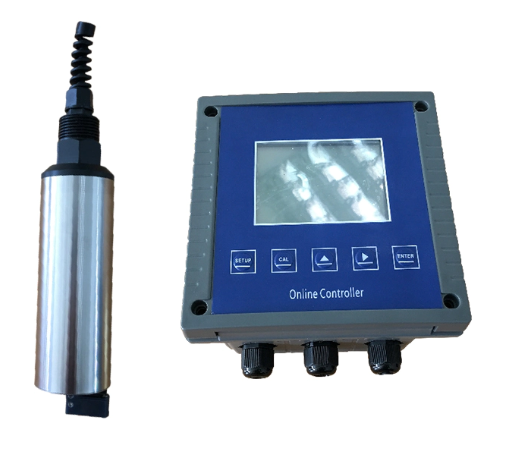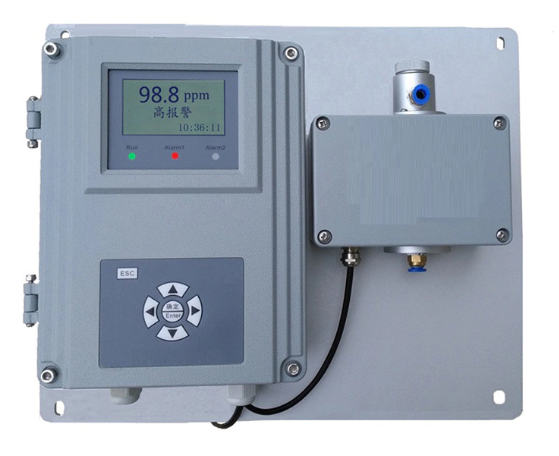Contact us right away
If you run into any issue or have any question.
 E-mail: michael@shboqu.com | Expert in Water Quality Measurement and Water Treatment Project
E-mail: michael@shboqu.com | Expert in Water Quality Measurement and Water Treatment Project
Oil in water threatens aquatic life and human health. Detecting oil in water is complicated by elements such as oil kind, concentration, and water body features. Detecting oil in water usually starts with visual investigation. Large oil spills create water sheens or slicks. Visual examination can't measure oil concentration or kind. To overcome these limitations, water samples are often collected for detailed analysis. Sampling methods vary based on the context, ranging from simple collection for small-scale analysis to more elaborate methods for larger bodies of water.
Once carefully obtained from possibly hazardous places, water samples undergo sophisticated analysis. These methods are precise and reliable:
Infrared Spectroscopy (IR) uses infrared light to interact with sample molecules. When infrared light hits a sample, oil molecules absorb certain wavelengths. IR's ability to identify oil-specific absorption spectra makes it effective. This uniqueness lets scientists detect and classify oil. Other chemicals in the water sample that absorb infrared light might reduce IR accuracy. Expert chemists are needed to interpret the findings. IR is still preferred due to its non-destructiveness and the amount of chemical information it delivers about the oil.
Gas Chromatography (GC) is reliable for breaking down complicated combinations. GC is essential for oil detection. The method is vaporizing water and passing it through a long, thin column with a stationary phase. Various oil vapor components separate as they flow through this column at various speeds. This separation lets you analyze the oil's hydrocarbon content and quantity.
GC's accuracy requires sophisticated equipment and skilled workers. The complex procedure and sensitive equipment necessitate a controlled laboratory atmosphere and competent management. However, GC's thorough compositional data is essential for environmental monitoring and pollution assessment.
Using mass spectrometry, or MS, in conjunction with gas chromatography (GC) expands the scope of oil analysis in water. The next step in analyzing the oil components is MS, which takes over once GC has separated them. It does this by examining the mass-to-charge ratio of ionized molecules. Based on its distinct mass spectrum, the data obtained enables the identification of each component.
When used together, gas chromatography (GC) and mass spectrometry (MS) are very effective methods for identifying and measuring oil components in water, even in trace amounts. Because of its two-pronged approach, GC-MS has become the analytical method of choice in environmental labs. Environmental protection and regulatory compliance rely on it because of the quantitative and qualitative data it provides regarding contaminants.

One very advanced tool for reliably detecting oil in water is the BOQU Online Oil in Water Analyzer. It has a measurement range of 0-50ppm or 0-0.40FLU and works on the concept of ultraviolet fluorescence. The gadget stands out because it has a remarkable resolution of ±3% F.S. and shows superb linearity with an R² higher than 0.999. This analyzer is particularly robust, featuring IP68 protection, making it suitable for underwater use up to 10 meters deep. It operates effectively within a temperature range of 0 to 50 °C.
For communication, it utilizes the RS-485 protocol with MODBUS compatibility. The installation is designed for submerged environments, and the sensor, measuring Φ45*175.8 mm, is housed in SS316L material, with an option for a customized titanium alloy. Additionally, the device includes a self-cleaning system, ensuring reliability and low maintenance, even in demanding conditions.
OIW-300P Online Oil in Water Analyzer from BOQU is tailored for reliable and efficient oil level detection in water samples. It features a color range of 0.1-299.9ppm and maintains an accuracy of less than ±3%. The device is designed for long-term use, with a storage time of over three years (optional) and a recording interval that can be set from 0 to 30 minutes, defaulting to 10 minutes. The display mode is RS485 Modbus RTU, which operates within a working temperature range of 0 to 55℃. The analyzer provides a 420mA output and includes four SPDT relays capable of handling 230VAC at 5A. It also features two acousto-optic alarms with customizable values and times.
The power supply options are versatile, including AC (100230V, 50/60Hz) or 24VDC, with a consumption of 50W. The sample flow rate is adjustable from 0mL to 3000mL/min, ensuring accuracy, especially at lower flow rates for low-range measurements. The inflow and outflow pipelines are 1/4" NPT, providing external interfaces. Its dimensions are 40×33×10cm, making it a compact yet powerful solution for oil in water analysis.

Boqu Instrument is a hub of devices that speaks quality and accuracy in the water analysis industry. We are a leading manufacturer of water quality sensors and water quality analyzers.
Copyright © 2019 Shanghai BOQU Instrument Co.,Ltd | All Rights Reserved
Hello, please leave your name and email here before chat online so that we won't miss your message and contact you smoothly.